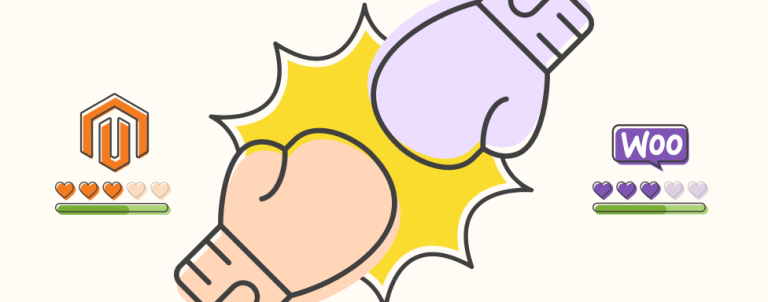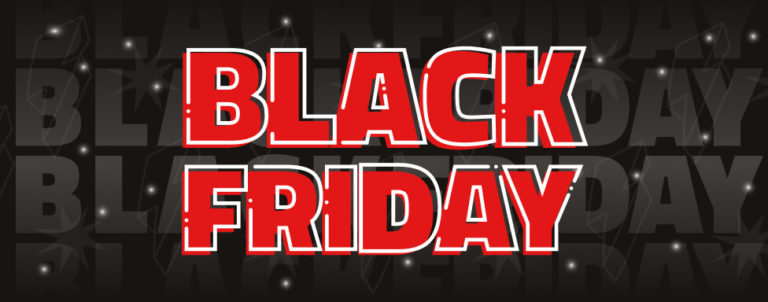When is the right time to talk about eCommerce project costs in communication with potential clients? How soon do you share your hourly rates? What to do when the only thing the client is interested in talking about is the price?
See how we handle project negotiations and let’s learn from each other’s experiences!
———
DISCLAIMER: If you are competing mostly on price when negotiating eCommerce projects, this post probably isn’t for you 🙂
———
So, an inquiry comes in. It may be a phone call, an email, or a person coming to your booth at an expo where you are exhibiting. It doesn’t really matter how you’re communicating, some of the main messages will remain the same in the early stage of talks.
Let’s go over some of the common scenarios and see what works and what doesn’t.
Starting the conversation
We start to talk business. What I’d usually go for, if we’re talking about eCommerce projects, are the rather common questions:
- What are you selling?
- Who are you selling to and why are they buying from you and not your competitors?
- What are your main goals from a new eCommerce solution?
- What problems are you looking to solve?
- How would you describe your ideal relationship with an eCommerce agency?
Most of these are open-ended questions and they should entice the person to open up. You may even learn some relatable personal stories, and you’re slowly building rapport.
Ideally, we would get some useful information about the business and project needs and goals. Then, we’d start drafting a proposal (or do some additional research and go for a follow-up call).
But hey, an elephant in the room! And a big one!
The dreaded topic of eCommerce website costs
The cost, or price, however we put it, is an important thing in any business negotiation. And we can talk about cost-based vs value-based pricing strategies, but in any case, the cost/price will have to come up at a certain point.
So, what is your strategy here? Do you open up with a direct question about the budget expectations, or do you do your best in showing interest and care and discuss the costs at the very end, just as the proposal is being drafted? We’ve done both, and all the things in the middle, over the last 12 years.
And there is no right or wrong here, especially because there are very different projects you can go into, so you have to be flexible. However, I wanted to share a good overview of the advantages and disadvantages of several approaches to opening the topic of project costs.
We’ll present three ways to talk about eCommerce development costs, and each one can be useful in certain scenarios. You can introduce the topic very early on, you can leave it aside for very late in the process of creating a proposal, or you can do it in a more balanced way.
Show me the money!
Start with or introduce pricing/costs topic early on.
The clear advantage of this approach is that you can move fast(er), close the conversation if there’s a mismatch of the expectations, and everyone can focus on finding the appropriate partners to move forward with.
What’s not good with this approach is that you are literally closing the door to any discussion about the client, their business, the project. You are not able to show your expertise or to establish any kind of rapport. It can be perceived by the client that you are in this only for the money.
When to use this approach? Almost never would be a good answer, you should always try to show at least some indication of interest and care – it’s only human, after all. However, sometimes it can be a lifesaver. Use carefully in situations where you may already have a lot of projects, or have to go over huge numbers of inquiries.
Let’s prepare the full proposal! With a cherry on top!
Do your best to understand the client’s business and their needs, ask a lot of questions and go for a full proposal. The costs will be presented in the proposal/project plan document.
The advantage of this approach is that you will get to know and understand a client’s business much better, and in the process, the expectations will be elevated. The client will see the care you and your team are showing, and will clearly see the benefits of working together. And then, if the price is right, you’re almost certainly in.
The disadvantage of leaving the topic of budget to the very end, and showing the full project costs in the proposal document, is that you are risking a lot of time and effort, without really knowing how the client will react. And if the price is way, way off, you’ve spent both yours and your client’s time. And you can’t get it back.
All of the care in the world won’t help the client if they can’t afford your services, and that will only leave everyone disappointed.
So, it’s probably wiser not to go all-in without making sure at least some high-level expectations are aligned.
When to use this approach? Again, like with the previous one, almost never. That is, unless you have an indication that they will be a good match. If this is true, you can win big by not pushing the budget talks right away. Instead – show that you care about their success and that it’s all that matters. It can work, but the risks are high.
Why don’t you just meet me in the middle?
As you may have expected, we prefer to use an approach where we combine the care and interest in our client’s business, and the desire to help them grow, but are also very aware of the possible budget constraints and respect each others’ time.
What is our typical process here?
- understand the client’s needs
- look for services that match those needs
- discuss costs and timeline expectations
You need to strike that good balance between what they need, what you can offer, how much is it going to cost and when can it be done.
And at this point, it really doesn’t have to be a detailed proposal – an indication of the project timelines and budget needed is usually a great way to focus the conversation and see what the best next steps are going to be.
Of course, there are nuances to this, and an experienced salesperson will sense when the time is right/appropriate to open the pricing topic, you have to have trust in their judgment too.
BONUS TIPS:
If a client opens up with “What’s your hourly rate?”, don’t avoid the answer. If you have tiers and packages, mention them too, but they’re clearly looking to make some quick comparisons, and you haven’t yet established rapport. So you probably won’t go far if you stall and/or try to sell them on your approach and how you are different than the others.
Hourly or daily rates? For standard projects, ongoing support and similar, the main talks will be around hourly rates, how many hours in a monthly package etc. Daily rates make more sense with higher-profile clients, those who are looking for FTE (full-time equivalent) support, and for projects that require quick turnaround. This usually means you have to engage a larger team with clear focus on a single project.
Lower the rates for the promise of more work to come in the future? I don’t think so. That way you’ll probably end up doing more and more work with the extra pressure of lowering your rates even further. We prefer to start with our standard rates (of course, there are always exceptions to this rule). Why so? Because, that way, we have some room to offer a certain discount for a larger project down the road.
———
So there you go. An overview of our approach to pricing talks when communicating with various eCommerce leads, looking to convert them into clients. It’s not perfect by a long shot, and we make frequent modifications to this. Because this is truly a neverending, yet fascinating, story.
How about you? What is your approach to conversations about eCommerce development costs? Would you like to share some of your tricks of the trade?
Let’s learn from each other, and we may even influence the way some of our future clients approach us.
Share your thoughts in the comments below!



